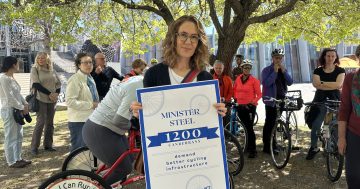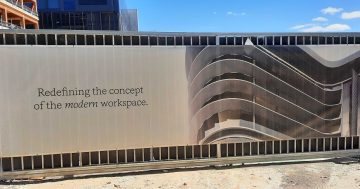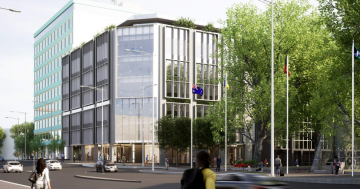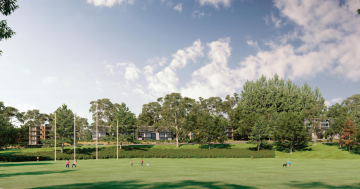
End-of-trip facilities: The government says the change is another step forward in reducing the barriers to active commuting. Photo: ACT Government.
It’s been a long time coming but a change in planning laws to require new and refurbished buildings to include end-of-trip facilities for cyclists and other active travel users is finally about to happen.
Draft Variation 357 – End-of-Trip Facilities General Code, tabled in the Legislative Assembly earlier this month, will come into effect later this year.
First proposed in 2017, it means many new buildings in the ACT and those undergoing major refurbishment will need to provide facilities such as showers, change rooms, lockers and bicycle parking.
Many developers are already providing end-of-trip facilities under the existing Bicycle Parking General Code, but this will set a new standard and support the government’s proposed Active Travel Plan, which is undergoing community consultation and is expected to be finalised by the end of the year.
The new code includes design requirements and a formula for calculating the number of spaces that need to be provided.
The only change to the draft is a clause excluding end-of-trip facilities from the gross floor area of a building.
Planning Minister Mick Gentleman said the government had engaged extensively with industry and community stakeholders to ensure the new rules would not create an unreasonable burden for building developers, owners or managers.
“By not including the space dedicated to end-of-trip facilities in the calculation of gross floor area, I think we’ve reached an excellent compromise between industry and employee benefits,” he said.
“This allows end-of-trip facilities to be provided without reducing the floor space for offices, retail spaces or dwellings in multi-unit complexes.”
Pedal Power ACT CEO Ian Ross said the new code was a positive change that the organisation had long called for but noted the number of buildings built since 2017.
“We think it is going to provide better advice and guidelines for developers to build things and mean better facilities are being produced for people who are riding,” he said.
“We hope it will support the government’s new active travel strategy.”
But Mr Ross said the new code would probably need to be updated in the future to take into account cultural changes in cycling that had occurred in the past couple of years.
He said Pedal Power had hoped requirements for charging points for E-bikes and places for larger cargo bikes could have been included.
Executive Director of the ACT Property Council Adina Cirson welcomed the government’s balanced approach, which had eased initial concerns about setting too demanding a level of requirements.
“We think these are good aspirations to have,” Ms Cirson said.
“We have an active cycling cohort in Canberra, so I think it’s really sensible to have to get this out into the public arena so people can design and plan buildings around the required ratios.”
Ms Cirson said many building owners had already been providing such facilities for some time.
“When people are designing buildings, they’re actually trying to make their office and the facilities available the most attractive on the market to make sure they get great tenants and long-term leases,” she said.
She expected facilities to evolve as needs change, with charging points for E-bikes, for example.
“I think it’s sensible that the government has also allowed for some merit-based assessment around this as well,” Ms Cirson said.
“We need to get a number of proposals through the planning system to work out their currency and if there are any unintended outcomes in the types of facilities that are being provided.”
Mr Gentleman said active travel was an important part of the government’s plans to improve the liveability and sustainability of Canberra.
“From planning to infrastructure, we’re working hard to make it as easy as possible for Canberrans to ride, run, scoot or walk to or from work, or enjoy some exercise on their lunch breaks,” he said.
“This is another step forward in reducing the barriers to active commuting and another way the ACT Government is creating a healthy, connected city.”
The new rules do not apply to single dwellings, such as stand-alone houses.




















